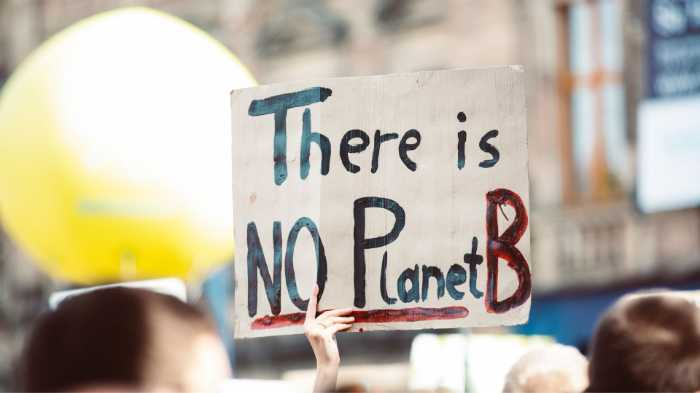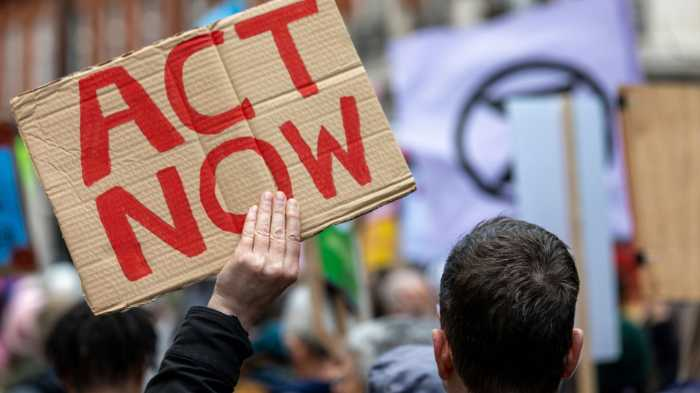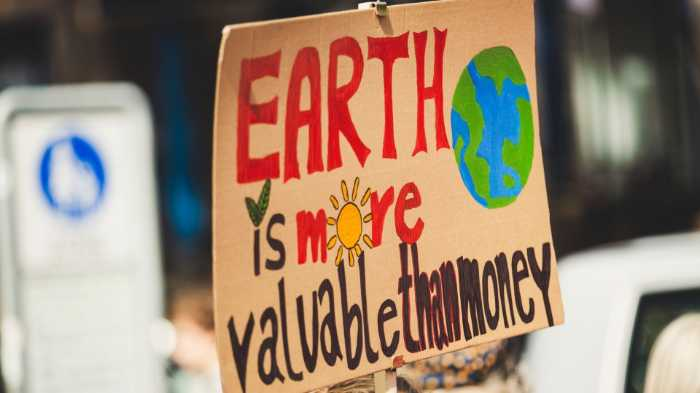
Climate change is one of the most pressing issues of our time and individual climate action is the solution. It’s something that we all have to deal with, and it’s up to each and every one of us to do our part in mitigating its effects. In this blog post, we’re going to talk about personal climate action: what you can do to make a difference. We’ll cover everything from reducing your carbon footprint to combating the climate crisis. So read on, and find out how you can help save the planet!
- What is climate action?
- Why is it important to take action against the climate crisis?
- How can I reduce my carbon footprint through individual climate action?
- How can you reduce your reliance on fossil fuels?
- FAQs
What is climate action?
Climate action refers to the actions taken by individuals, businesses, and governments to combat climate change. Climate change is the long-term alteration of temperature and typical weather patterns in a place. It can refer to regional climate changes, like shifting precipitation patterns, or global climate change, like an increase in the Earth’s average temperature. Climate action can take many forms, from personal choices like recycling to large-scale policy changes. The goal of climate action is to limit the number of greenhouse gases being emitted into the atmosphere and to adapt to the changing climate. By taking individual climate action, we can combat global warming and help protect our planet for future generations.
Why is it important to take action against the climate crisis?

The climate crisis is one of the most pressing problems facing humanity today. It is important to take individual climate action against the climate crisis for a number of reasons. First, the problem is only going to get worse if we don’t take collective action. Second, taking impactful actions can help to mitigate the effects of climate change. Third, it is important to set an example for future generations. Finally, taking action against climate change can help to improve the quality of life for people all over the world. We need to act now in order to prevent further damage and ensure a livable planet for generations to come.
How can I reduce my carbon footprint through individual climate action?

There are many simple ways to reduce your carbon footprint:
1. Eat less meat and dairy
A major way we can help the environment is by cutting back on the amount of meat and dairy we consume. The livestock industry is one of the biggest contributors to greenhouse gas emissions, and it takes a huge toll on natural resources like water and land. Moreover, the raising and slaughtering of animals is a major source of pollution. By eating less meat and promoting a plant-based diet, we can help reduce our carbon footprint and make a significant impact on the environment.
2. Eat more locally-grown food
One way to reduce your carbon footprint is to eat more locally-grown food. When food is transported long distances, it requires a lot of energy and resources. But when you eat food that is grown nearby, it doesn’t have to travel as far and therefore has a smaller carbon footprint. In addition, locally grown food is often fresher and tastier than food that has been shipped from far away. So next time you’re at the grocery store, take a look at the labels and see if you can find some food that was grown close to home.
3. Walk or ride a bike instead of driving
Instead of driving, walking or riding a bike are great alternatives that will reduce carbon emissions. These are great exercises to do and good for the environment. Also, it will take less time to reach your destination if you walk or ride a bike. Furthermore, if everyone walked or rode a bike instead of driving, there would be less traffic. This would improve air quality and the environment in general.
4. Take public transport
When multiple people ride together in a bus or train, it cuts down on the number of vehicles on the road, which reduces traffic congestion and air pollution. Plus, it saves you money on gas! So next time you’re planning a trip, leave the car at home and take the bus or train instead. It’s good for your wallet and good for the planet.
5. Carpooling
Carpooling is an easy way to reduce your carbon footprint. By sharing a ride with someone, you can cut down on the number of car trips you take, which saves gasoline and reduces emissions. Carpooling also cuts down on traffic congestion and saves you money on parking and tolls. If you can’t find someone to carpool with, consider taking public transportation or riding your bike. Just a few simple changes can make a big difference to the environment. This is a major individual climate action we can all control.
6. Drive a fuel-efficient car
Cars are a necessary evil. They get us where we need to go, but they also produce harmful emissions that damage the environment. If you’re looking for ways to reduce your carbon emissions, driving a fuel-efficient car is a great option. Fuel-efficient cars have come a long way in recent years, and there are now a variety of options available to suit different needs and budgets.
For instance, Tesla’s Model 3 is becoming increasingly affordable in 2023. Plus, there are a variety of customization options available to tailor the EV to your preferences and lifestyle. From hybrid cars to electric vehicles, there’s sure to be a fuel-efficient car that’s right for you. Not only will you be doing your bit for the environment, but you’ll also save money on fuel costs in the long run.
7. Turn off electronics when not in use
Many of us are guilty of leaving our electronics on when we’re not using them, whether it’s our computers, TVs, or game consoles. But did you know that this wastes a significant amount of energy? In fact, standby power consumption accounts for 5-10% of residential electricity use in the United States. That may not sound like much, but it adds up to over $100 per year for the average household. Luckily, there’s an easy way to reduce your carbon footprint and save money: simply turn off your electronics when you’re not using them. It only takes a few seconds, but it can make a big difference in the long run.
8. Buy recycled products whenever possible
When you buy recycled products, you are supporting businesses that are trying to reduce their environmental impact. Recycled materials require less energy and water to produce, and they generate fewer greenhouse gases. In addition, buying recycled products helps to create jobs in the recycling industry. By supporting businesses that are working to reduce their carbon footprint, you can help make a difference in the fight against climate change.
9. Buy energy-efficient appliances
Energy-efficient appliances use less electricity, which means they produce fewer greenhouse gases. They also save you money on your energy bill. When shopping for appliances, look for the ENERGY STAR label. This label indicates that the appliance meets or exceeds the minimum standards for energy efficiency set by the U.S. Environmental Protection Agency. Buying energy-efficient appliances is a simple way to reduce your carbon footprint and help protect the environment.
10. Plant trees
Trees play an important role in reducing carbon dioxide levels in the atmosphere. As they grow, trees absorb carbon dioxide and release oxygen. One tree can typically absorb around 48 pounds of CO2 per year, which means that a single tree can offset the emissions of one passenger car driven for 8,000 miles. In addition to their role in reducing CO2 levels, trees also help fight climate change by providing shade and cooling the air. They can also help to reduce air pollution and provide habitat for wildlife. As a result, planting trees is an effective way to reduce your carbon footprint and help stop global warming.
11. Invest in sustainable companies
As more and more people become aware of the need to reduce their carbon footprint, they are looking for ways to make a difference. One way to do this is to invest in companies that are working to develop sustainable products and practices. By supporting these businesses, you can help to accelerate the shift towards a more sustainable future. Not only will this help to reduce your own carbon footprint, but it will also create a market demand for more environmentally friendly products and services. As more businesses respond to this demand, we will start to see real progress in the fight against the climate crisis. Individual climate action also includes putting pressure on companies to make changes.
Savvy Investors are also reading…
The Best Sites to Learn How the Markets Work
The Best Artificial Intelligence Investing Sites
The Best Supported Algorithm or Quant Trading Sites
12. Change buying habits
Another way we can reduce our carbon footprint is by changing our buying habits. Instead of opting for disposable products, look for items that can be reused or recycled. Choose products made from sustainable materials, and avoid those that come with a lot of packaging. Whenever possible, buy in bulk to avoid excess waste. These small changes can make a big difference in the amount of pollution we create.
13. Compost food scraps instead of throwing them away
Food waste is a major source of methane, a greenhouse gas that is much more potent than carbon dioxide. By composting your food scraps, you can prevent them from decomposing in landfills and releasing methane into the atmosphere. Composting is also an excellent way to fertilize your garden, saving you money on store-bought fertilizer. Not to mention, it’s a great way to reduce your garbage output and save space in your trash can. If you’re not sure how to get started, there are plenty of online resources and community groups that can help you learn about composting.
14. Insulate your home
If you’re worried about your greenhouse gas emissions, insulating your home should be on your list. By sealing up cracks and gaps, you can prevent heat from escaping in the winter and cool air from escaping in the summer. This will help to keep your home at a comfortable temperature year-round while also saving energy and money. In addition, insulating your home can help to reduce noise pollution and improve indoor air quality.
15. Carbon offsets
Carbon offsets are a type of trade in which one party (usually an individual or corporation) agrees to offset their greenhouse gas emissions by funding a project that will reduce emissions elsewhere. For example, you might purchase carbon offset by investing in a wind farm. The wind farm will then generate electricity without emitting greenhouse gases, offsetting the emissions from your own activities. Carbon offsetting can be an effective way to reduce your carbon emissions, but it is important to make sure that the offsets are genuine and that the projects you are supporting are actually reducing emissions. Otherwise, you could be inadvertently funding pollution instead of helping to prevent it.
You can’t improve what you don’t measure.
Free Verified Carbon Calculators.
Erase Your Carbon Footprint in less than 5 Minutes
Personal Carbon Footprint Calculator
Business Carbon Footprint Calculator
How can you reduce your reliance on fossil fuels?

Although fossil fuels are extremely useful, they come with a number of drawbacks. They are a leading cause of climate change, and their continued use threatens to cause irreparable damage to the environment. Reducing our reliance on fossil fuels is a personal action we can take to address climate reasons. Here are some ways to get started:
1. Combine errands into one trip
One simple way to reduce your reliance on fossil fuels is to combine errands into one trip. This saves time and money, and it cuts down on the number of car trips you take. For example, instead of going to the store and then the post office, you can combine those two errands into one trip. This reduces the number of car trips you take and the amount of gasoline used. In addition, you can plan your errands to take the most direct route possible. This also saves time and money, and it further reduces your reliance on fossil fuels.
2. Cook at home using a slow cooker or solar oven
Another way to reduce your reliance on fossil fuels is to cook at home using a slow cooker or solar oven. This method of cooking uses very little energy, which helps to reduce your carbon footprint. Additionally, it can save you money on your energy bill. Slow cookers and solar ovens are also very easy to use, and they can help you create healthy and delicious meals. With a little planning, you can make sure that you always have a home-cooked meal on the table. And by reducing your reliance on fossil fuels, you can help to protect the environment.
3. Hang dry your laundry
You can also reduce your reliance on fossil fuels if you hang dry laundry instead of using a clothes dryer. Clothes dryers are a major source of energy consumption in many households, so hanging laundry to dry can save a significant amount of energy. In addition, the sun’s ultraviolet rays can help to kill bacteria and other pathogens, making hung laundry more sanitary than laundry that is dried in a machine. Finally, air-drying your clothes can help to prolong their lifespan by preventing shrinkage and damage from heat. So if you’re looking for an easy way to save energy and money, consider hanging your laundry out to dry.
4. Limit air conditioning
Air conditioning is one of the biggest uses of energy in most households, and it’s also responsible for a large percentage of greenhouse gas emissions. There are a number of ways to reduce your reliance on air conditioning, and one of the most effective is to limit its use. Try to keep your home cool naturally by shading windows and using fans, and only turn on the air conditioning when absolutely necessary. You can also make your home more energy-efficient by making sure that it’s well-insulated and using energy-efficient air conditioners. By taking these steps, you can significantly reduce your reliance on fossil fuels and help to protect the environment.
5. Telecommute
Believe it or not, one of the best ways to reduce your reliance on fossil fuels is to telecommute. That’s right, by working from home, you can actually help to conserve energy. Think about it this way: when you telecommute, you eliminate your commute. And that means you’re not using gas to drive to and from work each day. In fact, the average American commute is about 26 miles round trip. Over the course of a year, that adds up to a lot of gas and a lot of money! Not to mention the time you’ll save by not sitting in traffic. So if you want to do your part to reduce dependence on fossil fuels, consider ditching your commute and working from home instead.
These are just a few of the many individual climate action steps we can take to reduce our reliance on fossil fuels and live a more sustainable lifestyle. Every little bit counts and every action we take helps to make a difference.
Conclusion
There are many individual climate action steps that will reduce our reliance on fossil fuels and help us live a more sustainable lifestyle. Each individual action may seem small, but when combined, it can have a big impact. So next time you’re looking for ways to reduce your carbon footprint, remember these tips and do your part to help protect the environment.
FAQs

What are the global greenhouse gas emissions?
Greenhouse gas emissions are released into the atmosphere when fossil fuels are burned. These emissions trap heat, causing the Earth’s temperature to rise and leading to climate change. More than half of global greenhouse gas emissions come from just three economic sectors: electricity, transportation, and industry. Reducing emissions in these sectors will require systemic change, including a switch to renewable energy sources and the implementation of policies like the United Nations Environment Programme and carbon tax. Otherwise, we will continue to see rising temperatures and an increase in extreme weather events, leading to climate chaos.
How does climate change affect the way we live?
Climate change is a significant and long-term challenge that requires us all to take action. It is estimated that human activity, largely the burning of fossil fuels, has contributed to around 1.5°C of global warming since pre-industrial times. If we are to avoid the most severe impacts of climate change, we need to urgently reduce emissions and tackle this issue head-on. This will require changes in the way we live, from switching to renewable energy sources to eating more plant-based diets. But it is not all doom and gloom – by taking action on climate change, we can also create a cleaner, healthier, and more sustainable world for future generations. Governments and businesses have not yet been able to shift us to a sustainable living model. And that is why individual climate action is the solution.
Which are the largest fossil fuel companies?
The world’s largest publicly traded oil and gas companies are American, Russian, British, and Chinese. The largest by market value are ExxonMobil, Royal Dutch Shell, BP, and PetroChina. Together these four companies are worth over $2 trillion. Each company has a long history and is involved in a wide range of activities, from exploration and production to refining and marketing. While they all produce fossil fuels, they are also involved in other businesses, such as chemicals, power generation, and trading. As the world moves towards a low-carbon future, these fossil fuel companies will need to adapt or face decline.
What is climate justice?
Climate justice is the principle that those who are most affected by climate change should have a say in decisions about how to address it. It also takes into account the historical responsibility of developed countries for contributing to the problem, as well as the fact that they have more resources to devote to solutions. Climate justice is thus an important part of ensuring a sustainable future for all.
What are some things I can do to help stop climate change?
- Eat a plant-rich diet.
- Advocate for political action on a global scale.
- Install solar panels.
- Raise awareness about the importance of stopping climate change.
- Drive an electric car.
- Use energy-efficient light bulbs.
What are climate solutions and individual climate action?
Climate solutions are any actions or technologies that aim to tackle climate change. They can be international agreements, like the Paris Agreement, or personal actions, like changing to energy-efficient light bulbs. Mitigating climate change requires both individual and collective action.
Personal actions can make a difference, but they must be done on a large scale to have a significant impact. For example, reducing meat consumption can help lower emissions because animal agriculture is a major contributor to climate change. But if everyone continues to eat meat at the same rate, the emissions from animal agriculture will continue to rise. Individual action is important, but it must be part of a greater effort.
Collective action is also necessary to address climate change. This can take many forms, from national policies to international agreements. For instance, the 2015 Paris Agreement was a landmark agreement between 195 countries to take collective action on climate change. The agreement includes commitments to reduce emissions and help countries adapt to the impacts of climate change.

Dean Emerick is a curator on sustainability issues with ESG The Report, an online resource for SMEs and Investment professionals focusing on ESG principles. Their primary goal is to help middle-market companies automate Impact Reporting with ESG Software. Leveraging the power of AI, machine learning, and AWS to transition to a sustainable business model. Serving clients in the United States, Canada, UK, Europe, and the global community. If you want to get started, don’t forget to Get the Checklist! ✅
